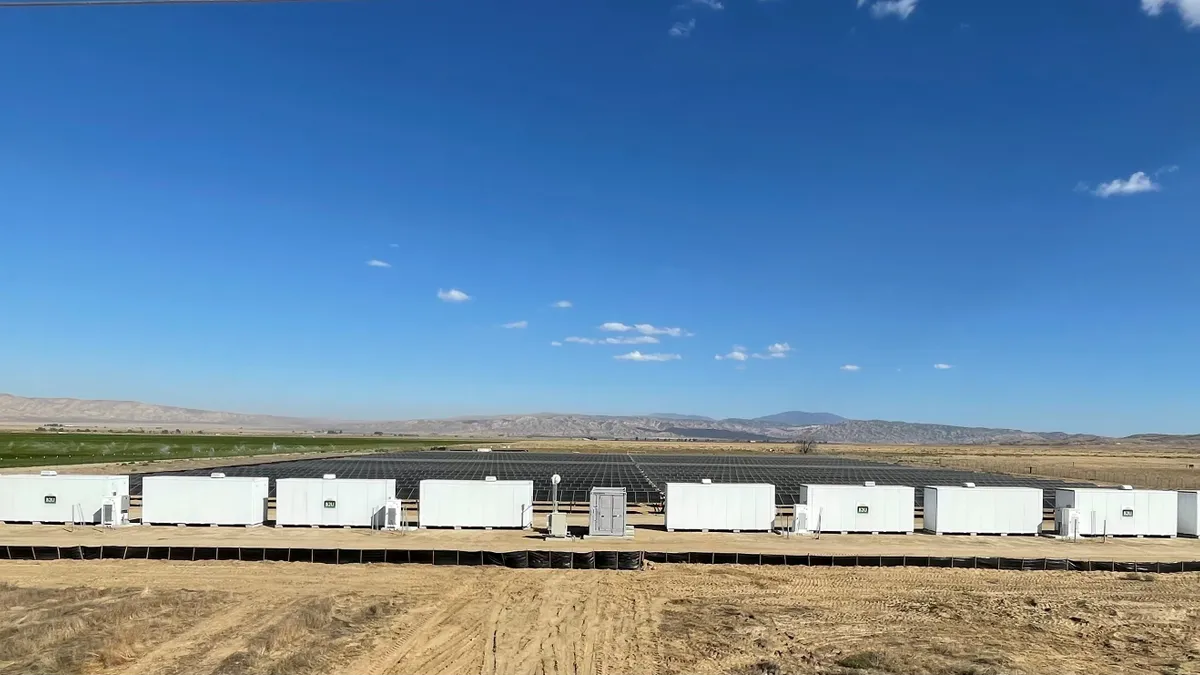Dive Brief:
- Venture capital funding in the global energy storage space broke records in 2023, coming in at $9.2 billion in 86 deals — a 59% year-over-year increase, according to a recent report from clean energy research and communications firm Mercom Capital Group.
- The jump in venture capital funding last year was fueled by the Inflation Reduction Act, which extended investment tax credits to standalone energy storage projects exceeding 5 kWh, Raj Prabhu, CEO of Mercom Capital Group, said in an email. “This incentive has spurred increased projects and installations,” he added.
- The most venture capital funding was directed to lithium-ion based battery technology companies, according to the report, although funding also went to companies involved in battery recycling, nickel-based battery technology, and others.
Dive Insight:
The overall outlook for the energy storage sector is relatively optimistic, with growing adoption driven by factors like renewable energy integration, grid stability, and the electrification of various industries, Prabhu said. In 2024, the sector is poised for continued growth, with installations and overall capacity expected to increase significantly as demand rises and the price of battery packs and energy storage system components decrease, he said.
Some of the largest venture capital funding deals that took place last year in the energy storage space include fleet electrification and battery storage company Zenobe, which raised $1.1 billion; battery material recycling company Redwood Materials, which raised $1 billion; EV battery manufacturer SK On, which raised $944 million; lithium battery manufacturer Verkor, which raised $905 million; and energy storage manufacturer Hithium, which raised $622 million.
In addition to the standalone energy storage tax credits, the IRA also offers a 10% domestic content adder and an advance manufacturing credit for U.S.-produced battery components, Prabhu said.
“Recycling of EV battery materials in the U.S. qualifies for subsidies,” along with other incentives that are also attracting investors,” he added.
Despite the high venture capital funding, overall merger and acquisition activity lagged in 2023, due to high asset valuations, elevated interest rates, and investor caution, according to Prabhu. Factors like high interest rates and market volatility due to supply chain disruptions are making some energy storage investors wary of deal-making, he noted.
“I think the investor caution will extend at least into the first half of 2024 until there is more clarity about the Federal Reserve’s plans for rate cuts, timeline and trajectory,” Prabhu said.
On the smart grid side, corporate funding dropped 30% year-over-year in 2023, recording $3.3 billion in 60 deals compared to $4.7 billion in 58 deals the previous year. Venture capital funding also decreased 55% year-over-year, according to the report.
The outlook for the smart grid sector, besides EV charging technologies, was affected by economic conditions, Prabhu said — most sectors that do not have direct policy support or incentives have struggled to overcome high interest rates and tough economic conditions.
However, the “outlook could improve in the second half of 2024 once there is more clarity about the rate cut trajectory,” he added.
Energy storage deployments have been growing both in the U.S. and globally, panelists said on a webinar hosted by the Clean Energy States Alliance on the state of the domestic storage industry Monday. In the U.S., that growth is dominated by California and Texas, Todd Olinsky-Paul, senior project director with CESA, said. These batteries are being used largely for frequency regulation and arbitrage, although other applications may become more prominent in the future, he said.















